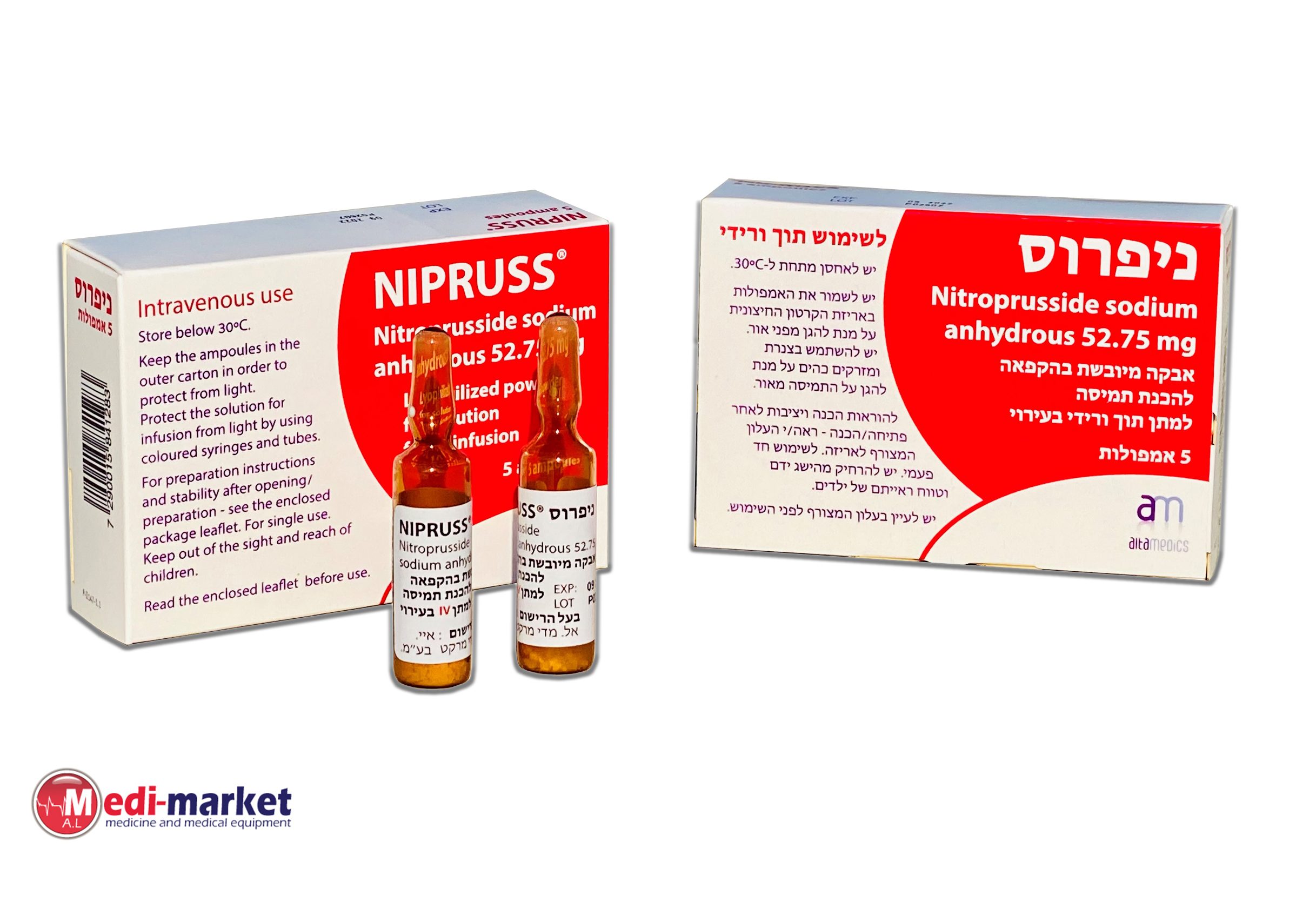Quest for the right Drug

ניפרוס NIPRUSS ® (NITROPRUSSIDE SODIUM ANHYDROUS)
תרופה במרשם
תרופה בסל
נרקוטיקה
ציטוטוקסיקה
צורת מתן:
תוך-ורידי : I.V
צורת מינון:
אבקה להכנת תמיסה לאינפוזיה : POWDER FOR SOLUTION FOR INFUSION
עלון לרופא
מינוניםPosology התוויות
Indications תופעות לוואי
Adverse reactions התוויות נגד
Contraindications אינטראקציות
Interactions מינון יתר
Overdose הריון/הנקה
Pregnancy & Lactation אוכלוסיות מיוחדות
Special populations תכונות פרמקולוגיות
Pharmacological properties מידע רוקחי
Pharmaceutical particulars אזהרת שימוש
Special Warning עלון לרופא
Physicians Leaflet
Overdose : מינון יתר
4.9 Overdose Signs and symptoms In case of acute myocardial infarction , an excessive reduction of aortic pressure bears the risk of a decrease in diastolic corona perfusion. In case of acute cardiac failure with decreased filling pressures the cardiac output may continue to drop. Tachyphylaxis and rebound phenomenon are possible. Cyanide intoxication may occur during the treatment with Nipruss. This depends on the duration of treatment and the dose level. Short-term treatment with 2.5 μg/kg/min is safe. By contrast, • 5 μg/kg/min after 10 hours, • 10 μg/kg/min after 4 hours and • 20 μg/kg/min after as early as 1.5 hours can lead to life-threatening cyanide levels. Treatment: Therapeutic countermeasures include reducing the infusion dose or administering an antidote. In case of cyanide intoxication, 4-dimethyl-aminophenol-hydrochloride (4-DMAP) 3 to 4 mg/kg IV (produces methaemoglobin) is recommended as a short-acting antidote. This is followed by an infusion of sodium thiosulfate, 50-100 mg/kg BW. In cases of thiocyanate intoxication, the infusion of sodium nitroprusside should be discontinued and, if necessary, thiocyanate should be removed from the body via dialysis. For further information, see also sections 4.2 and 4.4.

שימוש לפי פנקס קופ''ח כללית 1994
לא צוין
תאריך הכללה מקורי בסל
לא צוין
הגבלות
לא צוין
מידע נוסף
